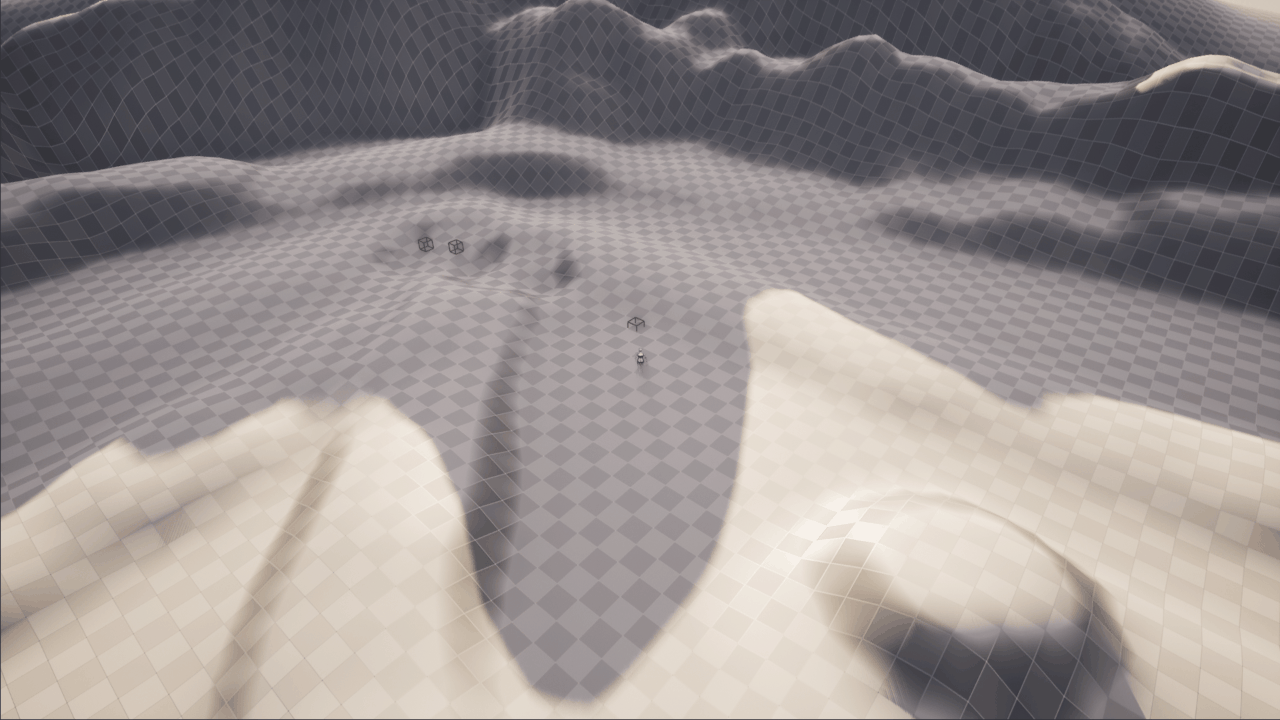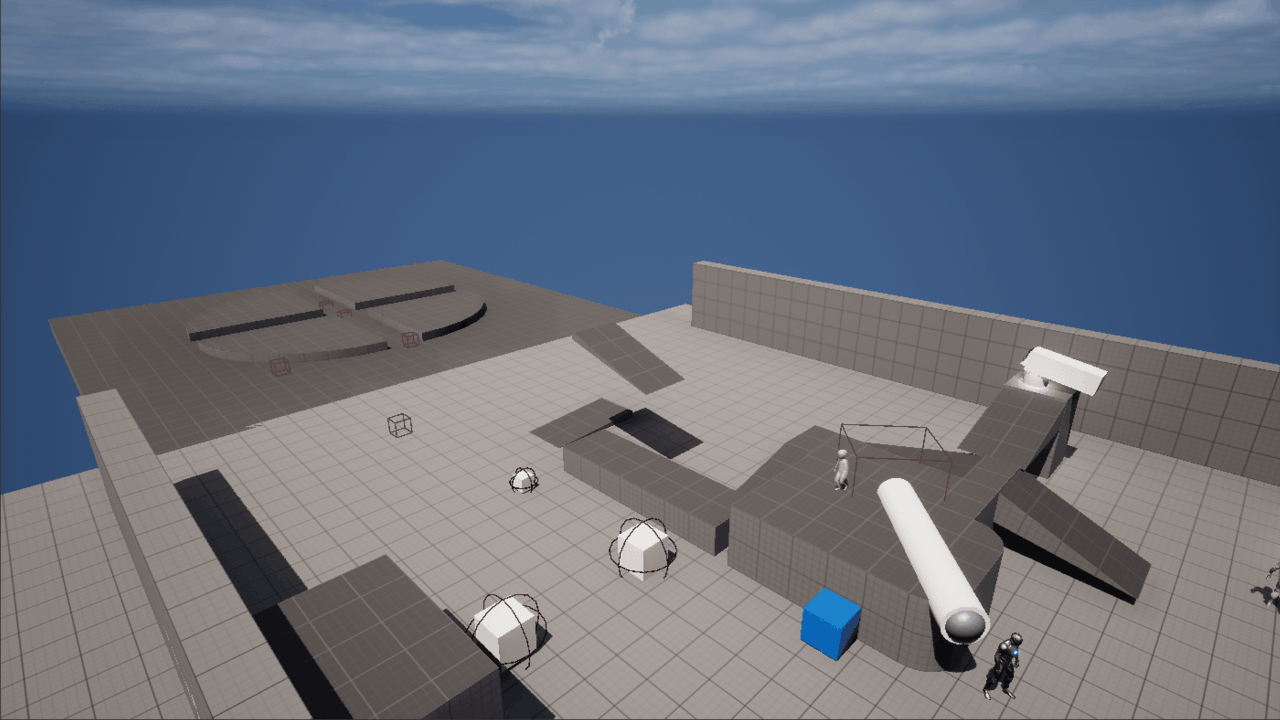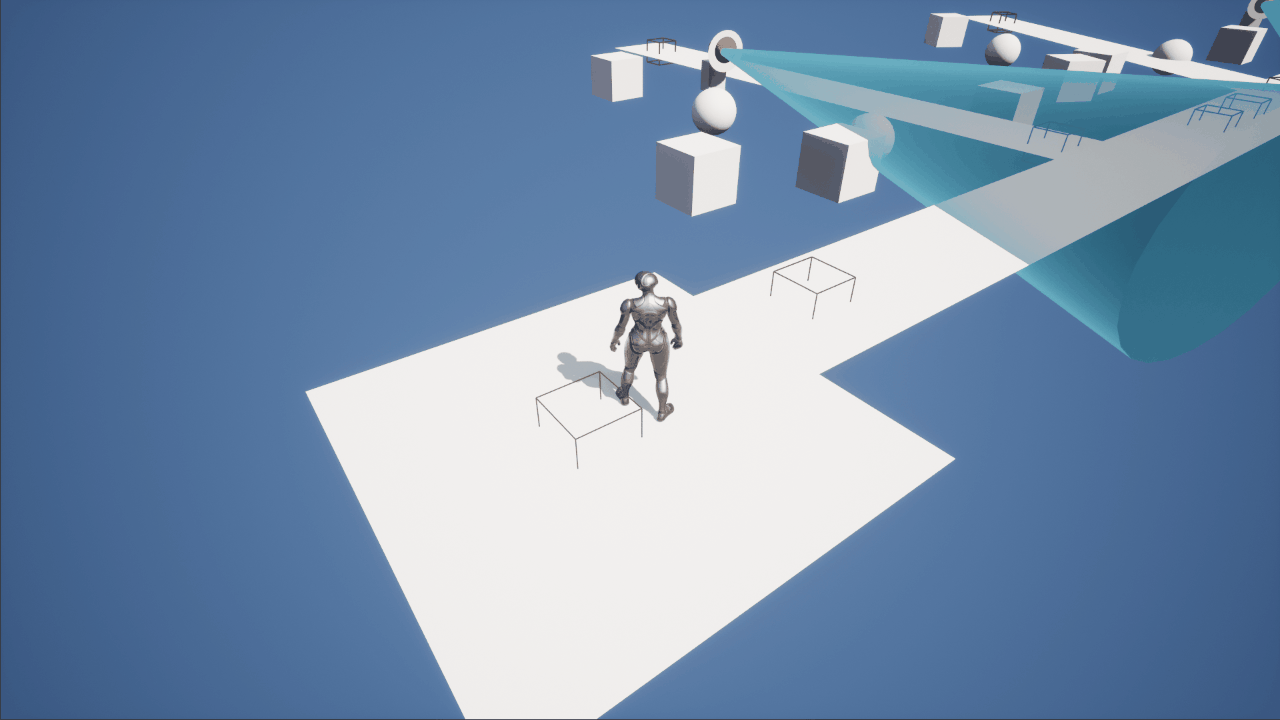Demo Reel
Demo Reel
Demo Reel
Demo Reel






BlindSight (WIP)
Unreal
Technical Designer
This project aims to create an experience that feels like you are rescuing yourself and others from all-encompassing systems without falling victim to them.
Towards this goal, we have gone through several iterations, though specific themes and elements have remained consistent. We want the player to navigate a 3d environment through a controlled camera track to limit the amount needed for the environment and give intentionality to our framing. Secondly, our main mechanic would operate through a representational apparatus, allowing the player to interpret others through its distortion and manipulate others with it. Lastly, and most crucially, the player, through our mechanics, is just as susceptible to our main mechanic as those they control.








Update 1
Our first iteration was highly focused on cameras, the player's vision, and manipulating how the world was visually presented. We wanted the player to feel trapped in a loop with a sense or feeling that they could quickly become so. That not properly scrutinizing their environment could result in their being stuck with it. We tried doing this by having the player get caught if they looked into the lens of a camera without a mask, by having the environment loop when they were caught, and by allowing the player when at a camera to control any AI currently looking at it. Within this approach, we appreciated how it worked thematically with its focus on eyesight and perception. Still, the on-rail camera meant the player would never have proper agency where they looked and that the control method was too direct, making it uninteresting.
Update 2
From this first example came the desire to include imperfect knowledge into the apparatus, not only because the extra steps would make the process more dynamic but also because by adding a layer between the representation and the represented, further manipulations can exist within it. This bore out in our second iteration as a task allocator. A device that, when pointed at a given area, would display the units there as one of 3 colors depending on their designated role: aggressor(red), operator(blue), and mover(green). These units could then be assigned a new location on the grid to focus on or even be reassigned roles. Once they have their location and role, they'd then either try to get to the location to do a task or do a task while in the process of getting to the location. In the end, this method felt limited by its need for direct eyesight, lack of physical connection to the player, and over-reliance on additional variables such as roles to add complexity.




Update 3
The current iteration aims to address as many previous concerns as possible while creating a simple mechanic that derives its complexity from the unique way it can chain together and plug into other more minor puzzle mechanics. It is an apparatus that operates more as an interesting tool for the world rather than just containing the whole puzzle within itself. This device pushes the idea of representing others into a physical space, having the player move around representational objects that are then moved by others. It creates an ominous layer between the player's actions and the movement of their intended target. All the while, the player on the pad is being manipulated in much the same way.